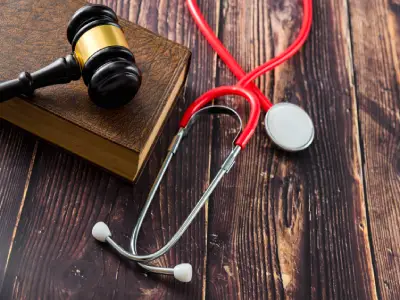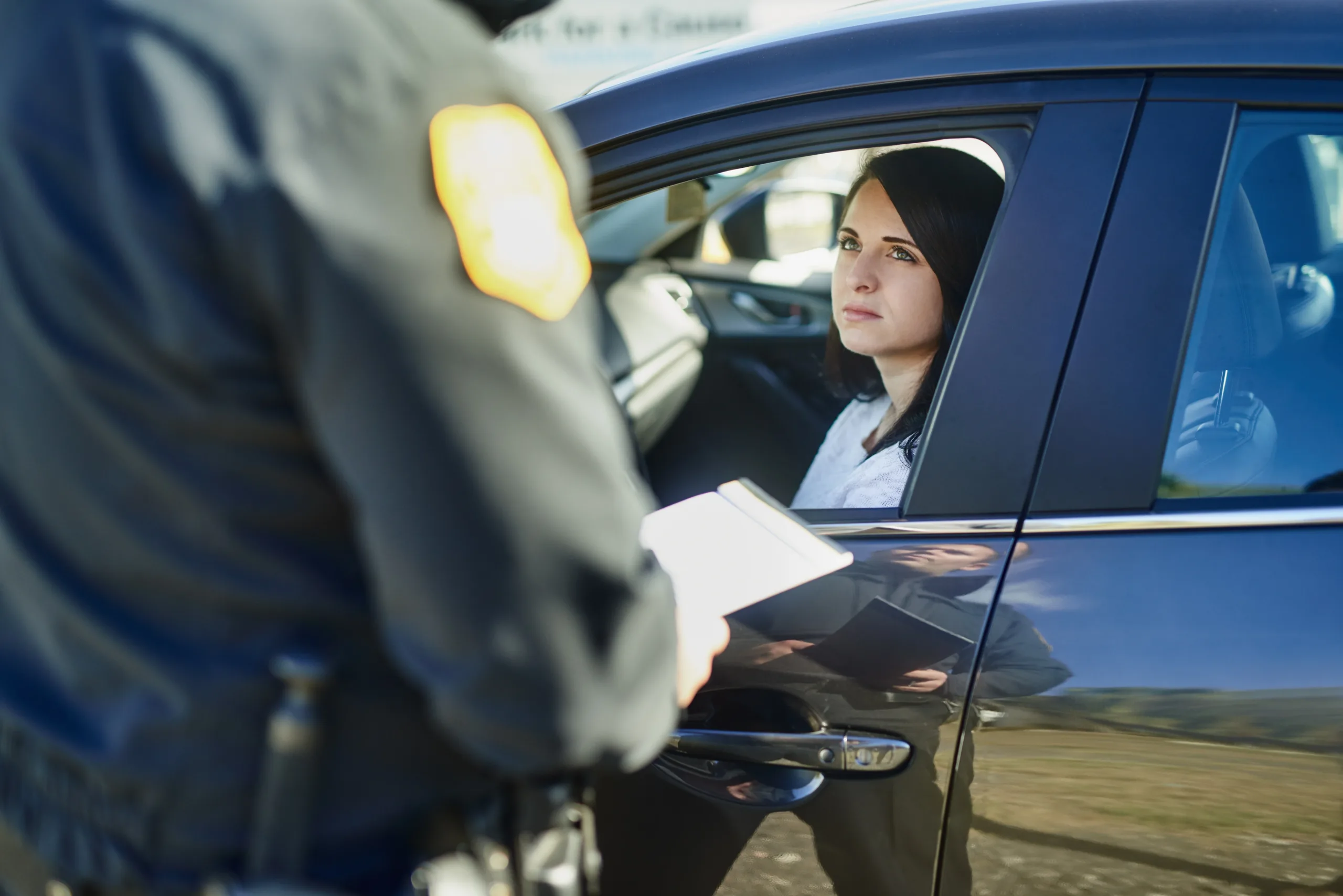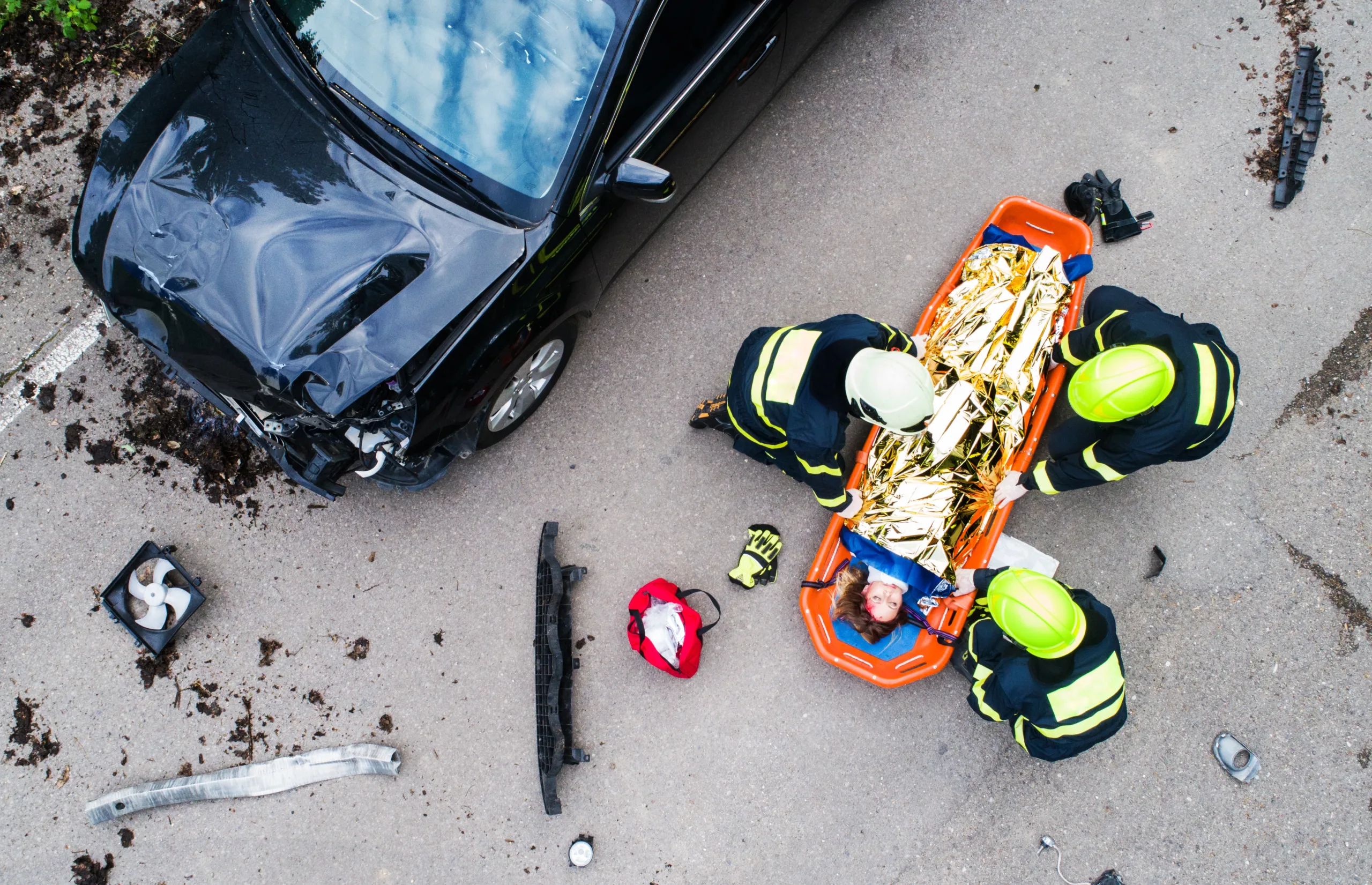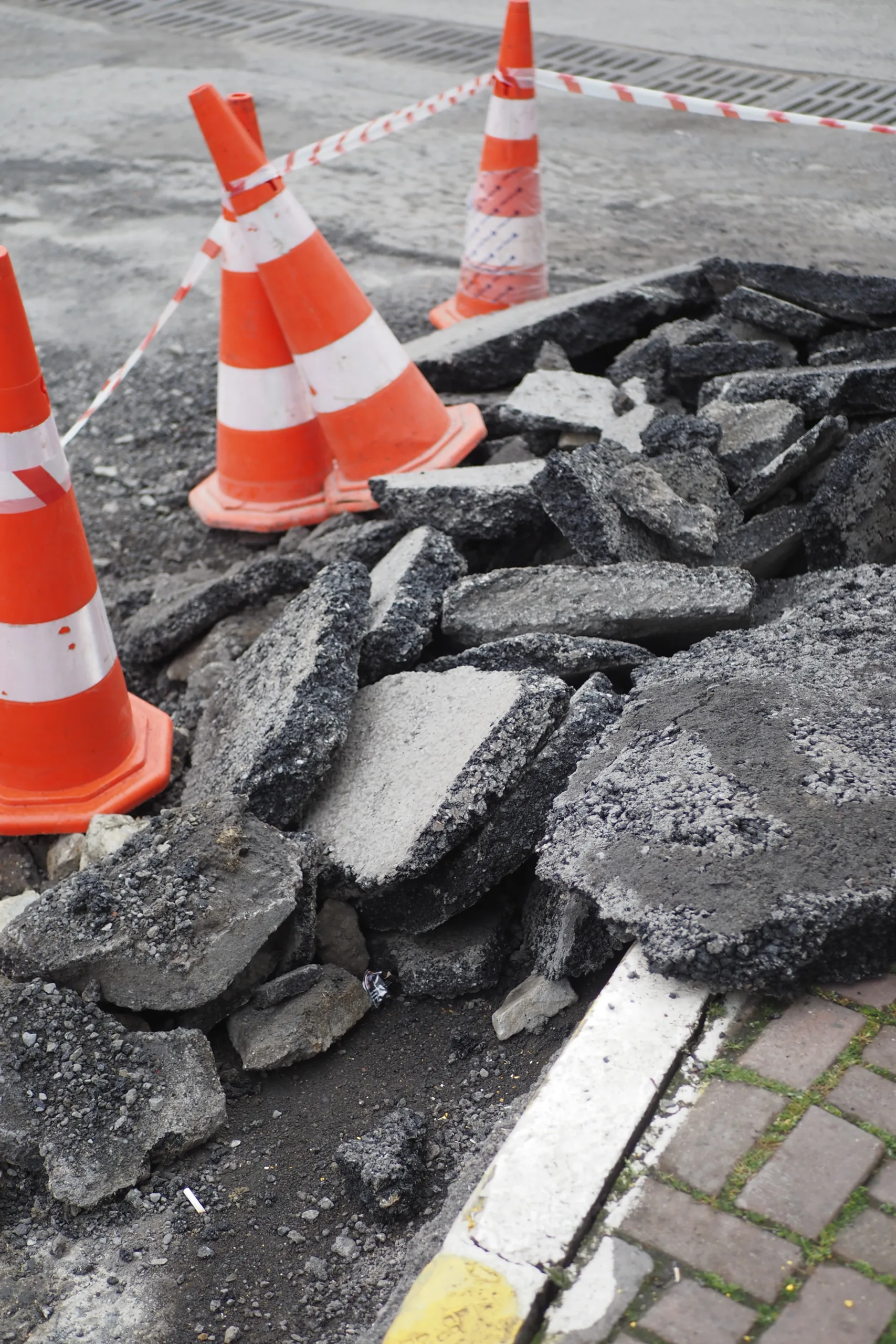It wasn’t your fault, but you’re hurt, scared, and concerned about your finances while you recover physically and emotionally. You’re not by yourself. Every year, thousands of people experience the same terrifying emotions. Thousands of people struggle to get the medical attention they require, rebuild their bodies after an accident, and put their lives back together. You may be wondering, “When you get injured, what should you do in Los Angeles?”
But this blog is about more than just learning how to win a personal injury claim in Los Angeles. The California Law information and resources provided below will answer most of the victim’s questions: when you get injured, what should you do in Los Angeles? It involves seeking immediate medical attention, filing a personal injury claim in Los Angeles, and locating the resources necessary to make your recovery as quick, effective, and comfortable as possible.
If you have any questions, please contact us at E. Orum Young Law Personal Injury Attorney, to set up a free case review with our skilled Los Angeles personal injury lawyer. We will go over the specifics of your case.
When You Get Injured What Should You Do in Los Angeles?
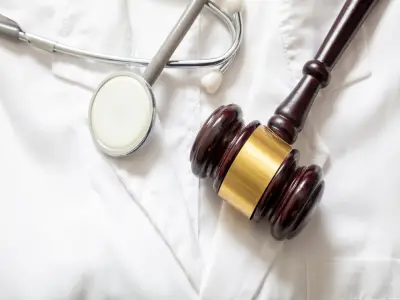 Every day accidents occur, and you may be involved in one at some point. Even if you drive carefully and responsibly, you may be at the mercy of events or someone who is not. Maintain your cool. Check to see if anyone has been hurt. Get out of the way of traffic and danger.
Every day accidents occur, and you may be involved in one at some point. Even if you drive carefully and responsibly, you may be at the mercy of events or someone who is not. Maintain your cool. Check to see if anyone has been hurt. Get out of the way of traffic and danger.
Call 911
Most people understand that you should call 911 immediately. However, many people don’t do it if they don’t have life-threatening injuries. You really should. Call 911 immediately if you or anyone else has been injured or if anyone is in imminent danger of injury.
Don’t be concerned that your accident was not serious enough to warrant a police response. If you call 911 and the operator determines that a police response is unnecessary, the LAPD will not dispatch a squad car.
Even if a car is dispatched, the Los Angeles Police Department will not file an accident report if there are no injuries, all parties have valid licenses, and all drivers willingly exchange registration, insurance, and contact information.
Gather Evidence From the Accident Scene
However, gathering evidence should begin before you consult a medical professional. If possible, begin collecting evidence as soon as possible after the accident to better reconstruct what happened, who was involved, and what outside factors may (or may not) have played a role.
This first-hand evidence gathered immediately following a collision can be invaluable in proving your side of the story to insurance companies, defense attorneys, and, ultimately, a jury. Indeed, if you’re wondering when you get injured, what should you do in Los Angeles? This is it.
Any information could be useful in establishing the other party’s liability. The following information should be collected and recorded:
- Photos of the aftermath of the accident (including the surrounding area)
- Video from the scene (remember to turn on your cellphone’s camera)
- Photographs of street signs, traffic lights, construction debris, skid marks, and so on
- Photographs (or video) of all other parties involved
- Individual license plate and vehicle photos
Also, note any traffic or security cameras attached to nearby businesses, as these may have captured the accident. Remember that you may be able to obtain bodycam footage of LAPD officers who respond to your personal injury accident in Los Angeles.
Document Everything
Physical evidence is probably the best and most persuasive tool you’ll have when it comes to proving your case, especially if you were involved in a LA motorcycle accident, which the at-fault driver usually contests. Documentation, on the other hand, is equally important. You should make a concerted effort to collect the following:
- Contact information for any eyewitnesses who may have witnessed what occurred
- Eyewitness statements that have been recorded or written (as soon after the accident as possible)
- All LAPD officers who respond to a 911 call must provide their name, badge number, and precinct.
- The distinct LAPD traffic accident report number
- Any individuals involved in the accident’s insurance information
- Medical records
Do I Really Need a Personal Injury Lawyer to Represent Me?
The straightforward answer is “no.” You are not legally required to have a lawyer to represent you. Many people choose to go through the financial recovery process on their own.
If you prefer, you can take a case to trial without the assistance of a legal professional. Whether or not you work with an injury lawyer in Los Angeles, you are always in control of your personal recovery process. However, keep in mind that not hiring a personal injury lawyer in Los Angeles may save you money in the short term. It is not always the best option.
Our knowledgeable Los Angeles personal injury lawyer can assist you in the following ways:
- Examine all of your recovery options (insurance claims, PI lawsuits, and more)
- Make the recovery process go more quickly.
- Increase settlements, insurance payouts, and jury verdicts
- Concentrate on your physical and emotional recovery rather than the day-to-day management of your personal injury case in Los Angeles
If you’re wondering when you get injured, what you should do in Los Angeles, and how to win your personal injury claim without a lawyer? Our competent Los Angeles personal injury lawyer will look at the details of your accident to see all the legal options possible.
How Can I Know If I Have a Valid Personal Injury Case?
Starting the complex financial recovery process may appear difficult, especially if you’ve never done it. When it comes down to it, determining whether you have a solid personal injury case in Los Angeles is quite simple.
- You were involved in an accident and sustained serious injuries (car accident, bicycle accident, motorcycle accident, pedestrian accident, etc.).
- That accident had to be caused in part by another person or, in some cases, a legal entity such as the Los Angeles County Metropolitan Transportation Authority.
- The “cause” of the accident must be the other party’s recklessness, negligence, poor decision, or carelessness. This is crucial in establishing liability in a personal injury case.
- You or the person at fault must have an active insurance policy. Technically, a policy isn’t required for you to have a personal injury case. Still, without one, your chances of receiving financial compensation for your injuries become increasingly difficult and, in some cases, impossible.
What Are the Steps in a Personal Injury Case?
Every day, numerous types of injury accidents occur. While some accidents are minor annoyances with minor property damage, others cause serious injuries or fatalities. The Los Angeles personal injury lawyer at E. Orum Young Law Personal Injury Attorney has extensive experience handling complex personal injury accident claims.
We take an innovative approach to investigating cases and presenting evidence to insurance companies and juries, which allows us to recover fair compensation for our clients. While each case is unique, it generally follows a similar procedure. To seek compensation, you must go through the claims process, which includes the steps outlined below.
Consultation With Our Personal Injury Lawyer
You should meet with our Los Angeles personal injury lawyer after you have sought medical treatment for your injuries. This meeting, known as a consultation, kicks off the personal injury claims process. During your consultation, you will discuss the specifics of your case with us.
We will ask you several questions to understand and assess the details and facts of what occurred. You can also ask questions to learn more about us, our experience handling similar cases, and other factors that will help you decide whether to hire the firm.
Examining Your Claim
If you hire us, we will thoroughly investigate your case. The investigation will include the following:
- Reviewing police reports.
- Investigating the accident scene.
- Analyzing photographs.
- Interviewing witnesses.
- Reviewing your medical records and bills.
- Determining your earning power.
- Other activities.
Depending on the facts of your case, we may collaborate with various experts to help locate and preserve evidence and gain a complete understanding of the circumstances. Medical experts, accident reconstruction experts, and others may be among these experts.
The investigative process will also include a close examination of the evidence to identify any potential defenses raised by the opposing party. All of these efforts assist us in determining liability and correctly valuing your claim.
Delivering the Demand Package
Following the preliminary investigation, the next step in the injury claims process is to draft and send a demand package to the insurance companies and defendants involved. We will calculate the value of your claim before drafting the demand letter by considering the extent and severity of your injuries, your past and likely future medical bills, wage losses, and non-economic losses.
We will give you a range of values within which you can expect a fair settlement offer once we have calculated the potential value of your claim.
Submitting a Civil Complaint
We can often settle claims for our clients without filing civil suits by negotiating with insurance companies. Some insurance companies, however, refuse to offer fair settlements or attempt to deny their insureds’ liability entirely. When this occurs, our Los Angeles personal injury lawyer may decide to file a civil complaint in court.
The civil complaint is the first legal pleading filed in a personal injury lawsuit. We will ensure that the complaint is properly served on the opposing party once filed. The defendant must file an answer to the complaint within a certain time frame. The case will enter the discovery phase once the complaint and answer have been filed.
Discovery
The discovery phase entails the parties exchanging evidence. To evaluate the case, you and the defendant must exchange evidence. The discovery phase, which may include written interrogatories and depositions, can last several months. Written interrogatories are a series of questions the other party must answer within a certain time.
Depositions are out-of-court hearings in which the lawyers can depose and question the various parties under oath. The discovery phase allows each party to assess the strength and value of the claim. Negotiations to reach a settlement agreement will continue throughout the discovery phase.
Mediation
Mediation is a form of alternative dispute resolution in which the parties attempt to reach an agreement. It could be scheduled before or after the filing of a lawsuit. Mediators are third-party neutrals trained to facilitate agreements and are frequently current or former judges.
The mediation procedure is unofficial. The mediator will meet with each side separately to reach an agreement. The steps you take in mediation can significantly impact your case, so you should have our experienced Los Angeles personal injury lawyer represent you during mediation.
Trial
Settlement agreements resolve the vast majority of our claims before going to trial. Sometimes, a settlement agreement is reached in the days preceding a trial. However, if your case has not been settled or resolved by the court through a motion, it will go to trial.
A jury judge will evaluate the evidence, determine who was at fault, and potentially award damages during a trial. Instead of going to bench trials, most personal injury cases are heard by juries.
Appeal
After a trial, either party may file an appeal. The appellate process differs greatly from the trial process. Because of the differences, it is critical to have an experienced appellate lawyer present during an appeal. E. Orum Young Law Personal Injury Attorney has a well-known team of appellate lawyers who have handled cases before various appellate courts.
Our philosophy is that winning our clients’ cases at trial is insufficient. Instead, we strive to ensure you win in the end, even if the opposing party appeals to a favorable verdict.
How Can I Recover Compensatory Damages for My California Personal Injury Case?
When you get injured, what should you do in Los Angeles? Recovering compensatory damages should also be one of your focuses. In California personal injury cases, compensatory damages are funds paid by the wrongdoer to compensate the victim for losses.
In contrast, punitive damages are intended to punish the defendant and discourage others from engaging in similar behavior. In California car accident or injury cases, compensatory damages are divided into two categories:
Economic Damages
A plaintiff’s “economic damages” can be readily quantified. Economic damages, also known as special damages, are intended to cover “out-of-pocket” expenses incurred by the plaintiff or that will be incurred in the future. Economic losses frequently include (but are not limited to) the following:
- Medical expenses, both past and future (including mental health medical treatments, prescription drugs, home health care, etc.)
- Damage to property
- Lost earnings or wages
- Lost earning ability
Non-Economic Damages
Non-economic damages do not necessarily involve out-of-pocket expenses or a specific monetary amount. Non-economic damages, also known as general damages (as opposed to special damages), include more subjective losses such as:
- Pain and suffering
- Emotional pain and mental anguish
- Physical disability (such as loss of the use of a limb or organ)
- Disfigurement
- Unjust suffering
- Loss of consortium
- Inconvenience
- Loss of enjoyment of life
How Does the Settlement Payment Process Work in California?
You must understand the process of personal injury settlements in California. This part also answers the question, what should you do in Los Angeles when you get injured? Here’s how the payment settlement process works.
You sign the Settlement Release Form.
You must sign a settlement release form when you reach an agreement on a settlement amount. This acknowledges that you have agreed to the amount and will no longer seek monetary compensation from the responsible party or their insurance company.
By signing the settlement agreement, all responsible parties are released from future damages and liability.
The Insurance Company Sends a Check to Your Lawyer
Your lawyer will send the signed release form to the liable party’s insurer, who will issue the settlement check. When the check arrives, it will be written in your name and reviewed by your lawyer.
Your Lawyer Deposits the Check
Your lawyer will deposit the settlement check into Interest on Lawyer Trust Accounts (IOLTA) after receiving it. This is where a law firm holds the client’s money until the case is finally resolved. This account is only available to approved financial institutions, and the law firm does not earn interest.
Your Lawyer Will Assist You in Settling Your Medical Bills
You must first settle your medical bills before receiving your compensation. Your lawyer can assist you in dealing with potential remedies such as liens. Instead of requiring upfront payment from you, these are deferred payments that the hospital can later recover from the liable third party. Liens must be paid in full before a settlement amount can be received under the law.
You Have Been Compensated
Your lawyer will provide you with a written breakdown of all expenses after deducting liens, attorney’s fees, and other litigation costs. Expect to receive your settlement check in the mail shortly after signing the document.
What Are the Different Payout Options for Personal Injury Settlements in California?
In a personal injury case in California, you have several options for receiving compensation. These are as follows:
Structured Settlement
If the settlement is structured, you will receive guaranteed payments regularly. In addition to tax benefits, this payment option ensures that you will have income in the future. This is appropriate for risk-averse individuals who do not have a steady source of income.
Lump-Sum
Unlike a structured settlement, the lump-sum payment option allows you to receive the entire settlement amount all at once. This is advantageous for those who want complete control over their settlement funds. However, because there is no governing entity to monitor the funds, there is a risk that the plaintiff will mismanage the funds, spend it all mindlessly, and incur debt.
What is the Statute of Limitations for Filing a Personal Injury Claim in California?
An insurance claim or a lawsuit enables a personal injury victim to obtain compensatory damages from the person or entity that caused the accident and injuries. Nobody will show up at the victim’s door with an open wallet. Liability and damages are common issues that devalue a case.
A personal injury lawsuit is not the same as an insurance claim. In general, a victim of an accident has two years from the date of the occurrence to file a personal injury lawsuit in California. Anything filed after two years is likely to be dismissed, and the victim is permanently barred from seeking any compensation.
Call Our Los Angeles Personal Injury Law Firm Today
Have you been injured in an accident in Los Angeles? You may be able to seek compensation from the person who caused your accident. Speak with our skilled Los Angeles personal injury lawyer at E. Orum Young Law, Personal Injury Attorney, to learn how we can assist you in filing a personal injury claim for damages.
We can also entertain your queries about when you get injured and what you should do in Los Angeles. Remember, you only have a limited amount of time to act, so call us right away. We will examine your potential case through our free case review, explain your rights as an accident victim, and walk you through the steps of filing a claim.

